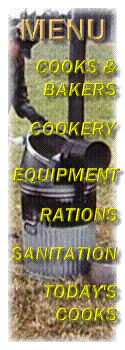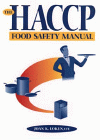
Field Dishwashing Tips
Reprinted from Chapter 5 of Logistics Support for the Naval Construction Force: Field Messing, Seabee Logistics Training Guide Series, Module No. 7.
The following tips are based on the experience of Seabee MSs. When followed, they will help make a field mess operate in a sanitary manner.
Pallets -- Use pallets or similar flooring material under the immersion heaters. This provides a stable platform for the garbage cans. It is very helpful in wet weather.
Thermometer -- Issue a pocket thermometer to all MSs as well as the leading food service attendant for each immersion heater crew. Train them to check temperatures often as needed to ensure proper temperatures are maintained.
Keep the water trailers full -- Coordinate with Alpha Company to keep the 400 gallon water trailers full. A NMCB field mess uses large quantities of water each day. It is upsetting to arrive at work at 0300 to find the water bulls empty.
Pre-fill cans -- Pre-fill the garbage cans with 20 gallons of water at the end of each meal or washing cycle. Cover each can between meals. This way the immersion heaters are ready to light. This is very important in the morning before breakfast when you do not have a lot of time to fill the cans and heat the water.
Drain cans -- Instruct the master-at-arms to have immersion heater crews empty all immersion heater cans at the end of every meal. Do not attempt to conserve this water. It is important to start each meals with fresh wash and rinse water.
Instruction signs -- Post signs next to each immersion heater with clear, concise instructions on how to prepare that can for use. An alternate method is to stencil the can designation, water temperature, and amount of hand dishwashing detergent directly on the can. This helps food service attendants, who are often assigned to the mess for a short period in the field, do their job correctly.
Drying table -- Use one or more tables as drying tables. If enough tents are available, use a tent to shelter the pot and pan storage area. Set up drying tables in a location where smoke and soot from the immersion heater stacks does not fall on the equipment. Be sure to cover equipment at the end of the washing period.
Sheet plastic -- Take a roll of heavy sheet-plastic to the field and use it to cover equipment after washing. This is especially helpful when equipment must be stored outside. It minimizes the need to re-wash equipment that gets dirty due to field conditions.
| Bulletin Board | Keyword Search |
| Bookstore | Links |
| About Us | Recent Additions |

